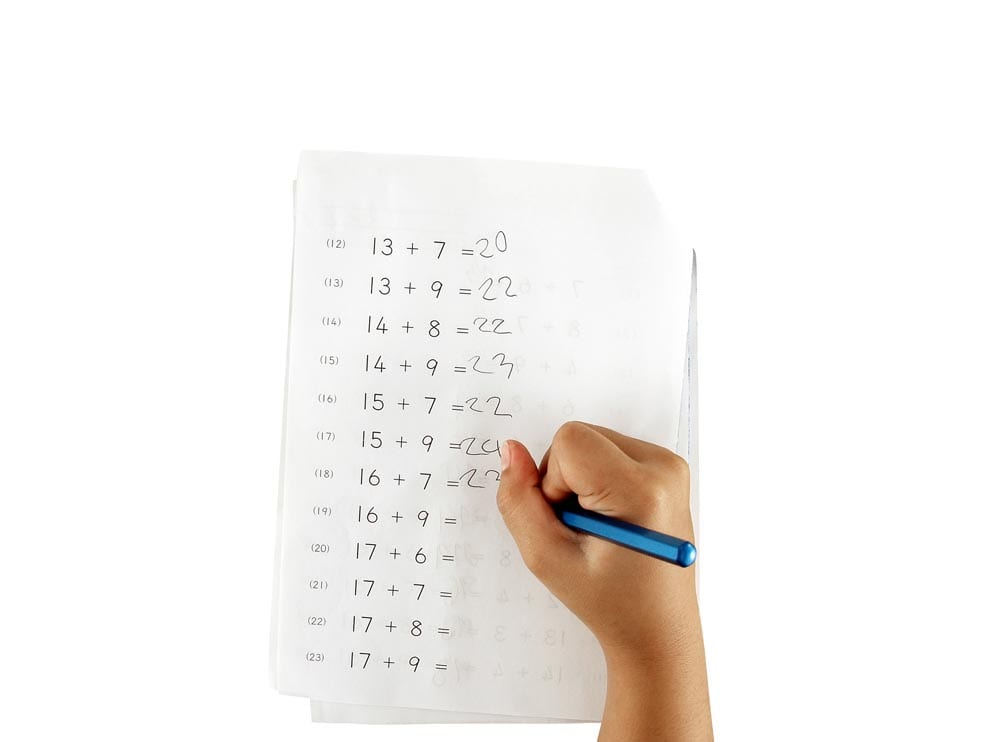Math Homework that Counts
 All Classroom Lessons
All Classroom Lessons
Grades 4–6
by Annette Raphel
Annette Raphel asks an important question in this new book: What constitutes good and meaningful math homework? Through her rich bank of math homework assignments, teachers come to see how homework can reinforce skills, prepare students for future lessons, extend their mathematical knowledge, and inspire their creativity.

Homework: If 3 is 5% of a number, what is 30% of that number?
This assignment, at first glance, doesn’t seem very difficult. But when I asked my sixth graders to solve this problem for homework, I also asked them to take notes about how they solved it. When we shared our approaches, I was convinced that the rote teaching of the three methods of solving percent problems is far less satisfactory than developing students’ wider sense of number.
Deema said, “I found out that one percent of the number is three divided by five, since three is five percent. The answer is three fifths, which I know is point six. Since I want thirty percent, I just multiply point six by thirty, and I get eighteen. The answer is eighteen.” I wrote what she said in shorthand on the board:
Find 1% and then x 5 by 30.
Joan said, “I knew that there were six fives in thirty, so there must be six threes in the number. That number is eighteen.” I wrote:
5 x 6 = 30 so 3 x 6 = the number we’re looking for.
Simone said, “I made two ratios. The first was to find the whole number. I wrote three over n equals five over one hundred. Then I cross-multiplied, and I knew that five n is the same as three hundred, so the whole number is sixty. Then I wrote n over sixty is the same as thirty over one hundred to see what thirty percent of the whole number would be. I got eighteen also.”
Charlotte said, “If three is five percent of a number then six must be ten percent of the number and if six is ten percent, then three times six, or eighteen, is thirty percent of the number.”
“Wow, that makes so much sense!” said John, amazed by Charlotte’s simple explanation.
“So, John,” I asked, “how did you solve this problem?”
“Well, my dad always says to draw a picture, and that’s a good idea, but I don’t always know what picture to draw.”
“Let’s see if we can help,” I suggested. I drew a big rectangle and divided it into ten long thin rectangles. “Each of these is ten percent.”
Sam chimed in, “Just cut them in half, and then each will be five percent.”
I colored one twentieth in and labeled it five percent. John got excited. “I know, you count by fives and color one of those sections in each time until you get to thirty. Let’s see, you’d color in six of them. That’s sixty percent.”
“No,” said Mike, correcting John, “I thought about it that way too, but without the picture. I said that five percent is one twentieth and twenty times three is sixty, so that means sixty is the whole number. Finding thirty percent of sixty is eighteen.”
“Wait,” said John. “What does that have to do with my picture? I didn’t have to figure out the whole number, I just know that I colored in six blocks and each one is worth three. Oh yeah, that means eighteen is thirty percent. I agree with Mike.”
I used to worry about spending so much class time discussing a homework assignment. However, as the TIMSS’ (1996–98) results suggest, what we really want is thorough understanding as opposed to an acquaintance with a wide variety of topics.
From Printed Newsletter Issue Number 28, Fall/Winter 2000–2001
Related Publication:
Math Homework That Counts, Grades 4-6
by Annette Raphel

Comments